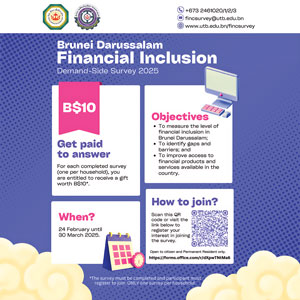TOKYO (AFP) – Japanese inflation accelerated in January, further pressuring households as prices excluding fresh food rose 3.2 per cent on-year, government data showed yesterday.
The rate was the highest since June 2023, fuelling speculation over the timing of the Bank of Japan’s (BoJ) next interest rate hike as it retreats from years of aggressive monetary easing to boost the moribund economy.
January’s core Consumer Price Index (CPI) was above market expectations of a 3.1 per cent rise, accelerating from three per cent in December, the Internal Affairs Ministry said.
Overall, inflation including volatile fresh food was up four per cent on-year – among the highest in the G7 – speeding up from 3.6 per cent in December and 2.9 per cent in November.
The price of cabbage almost tripled in January, in what local media have dubbed a “cabbage shock” after last year’s record summer heat and heavy rain ruined crops.
The price of rice also soared more than 70 per cent, yesterday’s data showed, while electricity bills jumped 18 per cent.
Last week, the government said it would release a fifth of its emergency rice stockpile after poor harvests and panic-buying over a “megaquake” warning pushed up the cost of the staple.
Japan has previously tapped into its reserves during disasters, but this was the first time since the stockpile was created in 1995 that supply chain problems have prompted the move.

The BoJ raised interest rates again last month, having done so in March 2024 for the first time in 17 years.
It is gradually normalising monetary policies after years of efforts to counter Japan’s “lost decades” of economic stagnation and static or falling prices.
“Japan’s hotter-than-expected CPI had all the makings of a knockout punch” for boosting the yen’s value, with traders ready for a “major shift” in expectations for central bank policy, said SPI Asset Management’s Stephen Innes.
“But instead, it turned into a slugfest as high-ranking officials stepped in to cool the yen rally,” he said.
Finance Minister Katsunobu Kato warned yesterday that higher bond yields could pressure government spending, because it means paying more for servicing Japan’s huge government debt.
His comments reminded traders “that the BoJ isn’t operating in isolation – it’s still tethered to the Ministry of Finance, which has its own set of concerns”, Innes said.
“Most economists expect the next BoJ rate hike to land in the summer, but the market isn’t entirely convinced.”
One dollar bought JPY150.26 mid-morning yesterday, with the Japanese currency weaker than 149.68 on Thursday.
This week, gross domestic product (GDP) figures showed that Japan’s economic growth slowed sharply last year, although the rate for the fourth quarter topped expectations.
It comes as companies fret over the impact of US President Donald Trump’s tariffs and other protectionist trade policies on the world’s fourth largest economy.
Japanese media reported on Thursday that the trade minister is arranging a visit to the US to seek exemptions from the tariffs.







